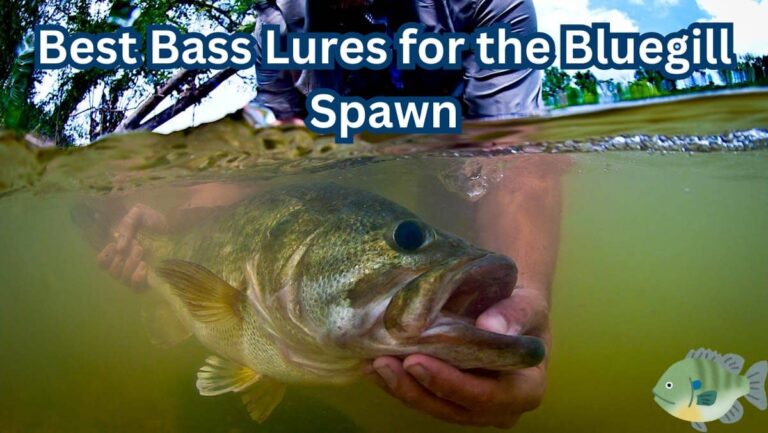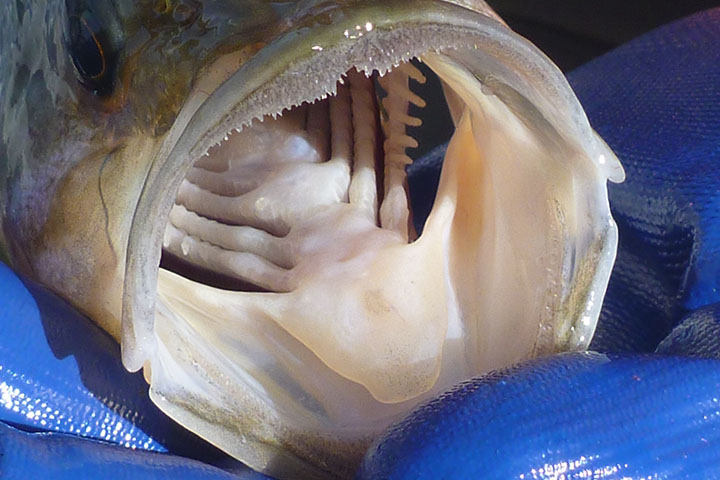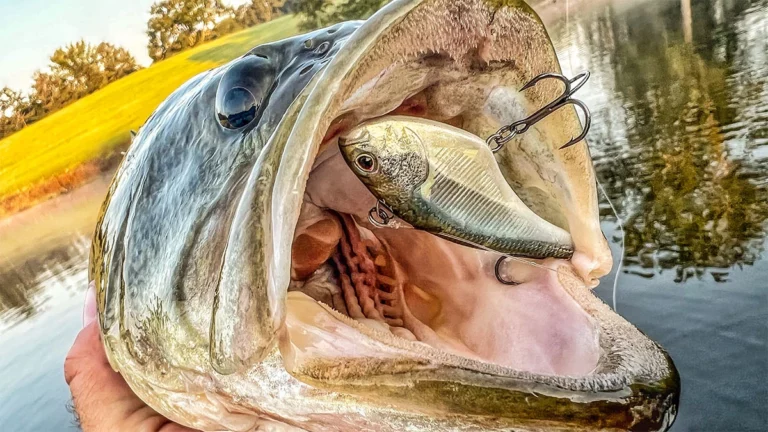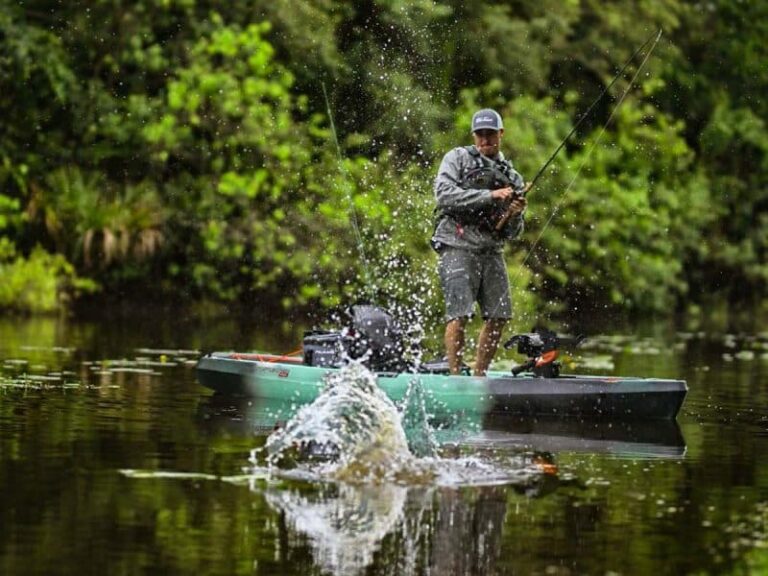How to Catch Bigger Bass in Ponds
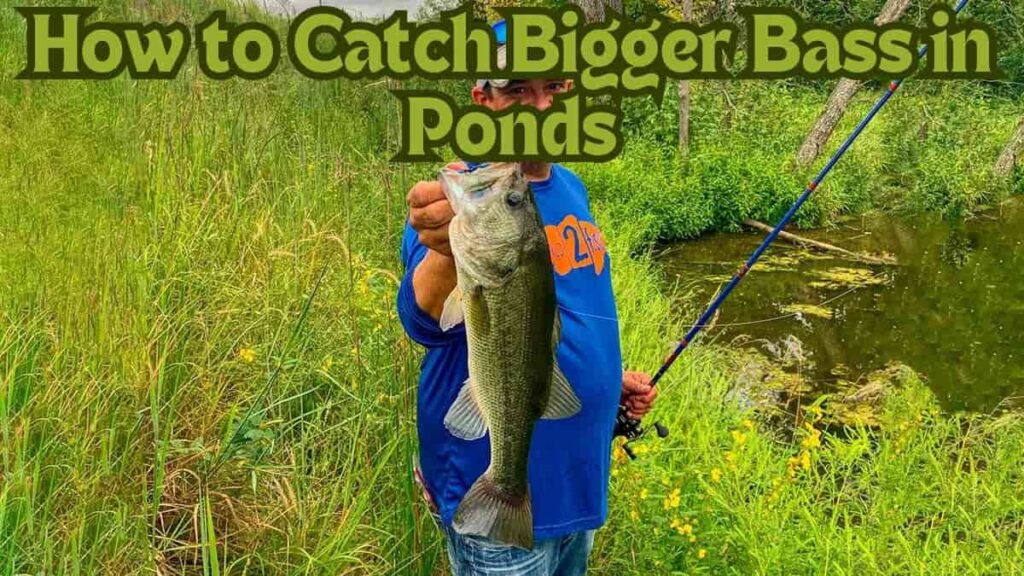
We all want to catch bigger bass. But most of us don’t have a bass boat or quick access to a large lake.
So that leaves us with small ponds. So if you still feel the need to reel is some lunkers, you need to know how to catch bigger bass in ponds.
Where to Find Bigger Bass in Ponds?
Obviously, you need to be able to find big bass in order to catch them.
The good thing about pond fishing is that there aren’t many places for big bass to hide.
Deep Water
Deep water is the best place to target bigger bass, especially during the hot months of the year.
Big bass have a harder time finding shallow cover to hide in. Just think about it, a small bass can hide behind a little twig or blend in with a small rock pile.
But a really big bass is just too easy to spot by its prey as well as its predators.
So many of these fish will head out to deeper water where they don’t need to hide to be out of sight.
Also, during most of the year, the deep water has the most stable and ideal water temperatures.
And since these bass are the apex predators and big dogs of the pond, they get to stay out in that water without being bullied for space.
Heavy Cover
As I mentioned above, big bass can’t rely on small cover or patchy weeds to blanket themselves.
However, if there is a form of very heavy cover, you can almost always find some huge fish on it.
“Heavy cover” could be a tree laydown, a dock, lots of lily pads, or other large, dense pieces of structure.
The problem with this cover is that it can be difficult to fish, especially when you are limited to the bank.
This is why when pond fishing, deep water is usually my favorite place to target lunkers.
Prioritize the Bottom
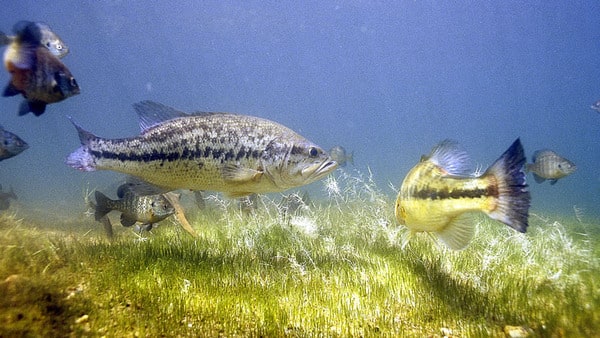
Big bass seem to prefer sticking close to the bottom. I’m not sure why they prefer this other than it is a bit safer and makes them less visible.
But especially when fishing small ponds where they can’t really suspend without being completely visible from all sides, big bass like to stick to the bottom.
I remember when I was growing up, all the big bass that I caught or missed would come when fishing some sort of bottom bait.
To this day, I like to stick to the bottom when targeting really big bass. The exception to this is during the morning and evening hours.
During these low light periods, even the big bass will rise up and chase after prey in all columns of the water.
Fish Slower
In small ponds, big bass don’t have the same free space and range to chase all around for prey.
They seem to like slow moving prey, and lures, much more. Now this doesn’t mean that you can’t catch big bass on fast moving baits.
But when you are really targeting bigger fish, it is best to slow down a bit. This plays in perfectly with the location of bass as well.
When you are targeting heavy cover or deep water, you are going to have to fish a bit slower anyway.
So make it easy for these big bass, and give them something they don’t have to chase super far.
Upsize Your Lures
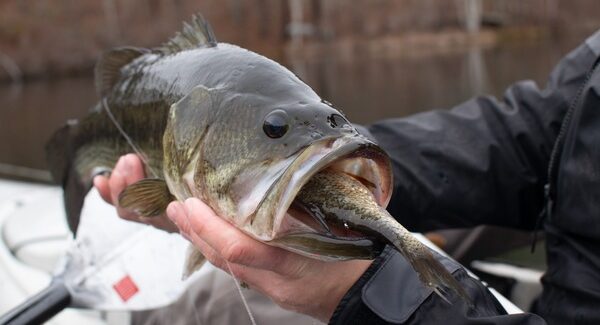
I’m sure you expected this one because it is pretty much common sense. If you want small fish, you use small lures.
And if you want big fish, you use big lures. And again, I’m not saying that it is impossible to catch big bass on small baits.
In fact, I have caught plenty of big bass on small lures. Heck, I’ve even caught big bass accidentally when fishing little crappie jigs.
But on average, bigger bass are searching for bigger food to satisfy their bigger bodies.
So to get their attention and satisfy their hunger, upsize your lures a bit.
Also Read: The 4 Lures that Catch the Biggest Bass
Use More Natural Colors and Presentations
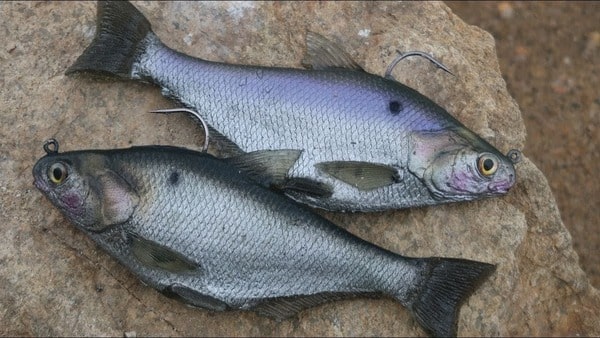
If a bass is really big, that means that it is also really old. These lunkers have seen all kinds of lures and have heard all kinds or lure sounds.
Big bass are very wise and can tell apart lures from real forage much better than smaller, younger bass.
Try to focus on more natural colors and lure types that match the hatch extremely well.
Best Lures for Bigger Bass in Ponds
Lures 2-5 on this list aren’t really in any particular order. But #1 is certainly my absolute favorite and stands alone when trying to catch big bass in small ponds.
1. Texas Rig

By far, the Texas rig has caught me the most big, pond bass. The Texas rig is so versatile and so natural or a presentation.
You can match the hatch perfectly with a wide range of soft plastics. Plus the Texas rig is weedless so you can fish it just about anywhere.
This includes the heavy cover that big bass key in on as well as the deep water where you can hop the bait along the bottom.
It really isn’t even close, the Texas rig is the best option for catching bigger bass when bank or pond fishing.
2. Senko Style Stick Bait
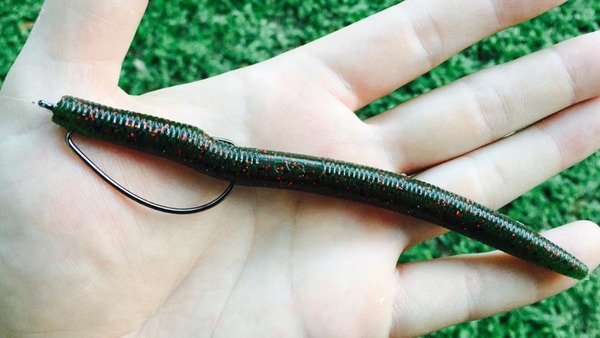
There is just something about the subtle, do-nothing action of a stick bait that convinces bass of all sizes to bite.
I have found that a stick bait will catch 8 inch bass and 8 pound bass all the same.
My favorite way to rig these baits is on a wacky rig. But if weeds are too much of a problem, rigging them weedless also works tremendously well.
3. Drop Shot

The drop shot is my go-to setup when fishing in either cold water or a cold front.
Now, I can’t exactly say that a drop shot specifically targets bigger bass.
But the thing is, during hard fishing conditions like colder water, you sometimes need smaller, finesse baits to get any bass to bite.
So while your average fish might not be huge, the drop shot can sometimes be the only way to get bass, including the big ones, to bite at all.
4. Buzzbait

This wouldn’t be a bass fishing lure list without some topwaters.
I’m not sure what it is, but the buzzbait consistently produces bigger bass than just about any other lure.
Maybe it’s the loud and annoying sound that just makes big, grumpy bass angry.
Or maybe it’s the V trail and bubbles that make the bait so easy to track down.
I don’t really know why they do, but I definitely know that buzzbaits catch bigger bass on average than just about all other lures.
5. Hollow Body Frog
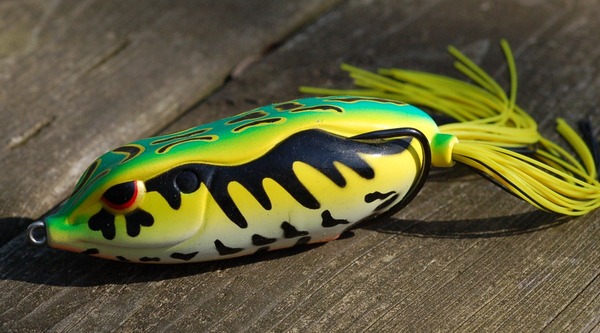
Small ponds tend to get over run by weeds, grass, algae, and pond scum.
This can make it very difficult to fish just about any lures. But the frog can be fished in the thickest and slimiest of vegetation.
Also, frogs do tend to catch a bit bigger bass. The average size increase is not as great as the buzzbait, but it is definitely noticeable.
Reeling this In
Catching bigger bass in small ponds is achievable by targeting deep water and heavy cover, fishing closer to the bottom, using larger lures with natural colors, and opting for versatile options like the Texas rig.
Stick baits, drop shots, buzzbaits, and hollow body frogs also prove effective.
Although all these insights are very valuable, the best way to learn how to catch bigger bass in ponds is from experience.
So get out there and catch some lunkers.


